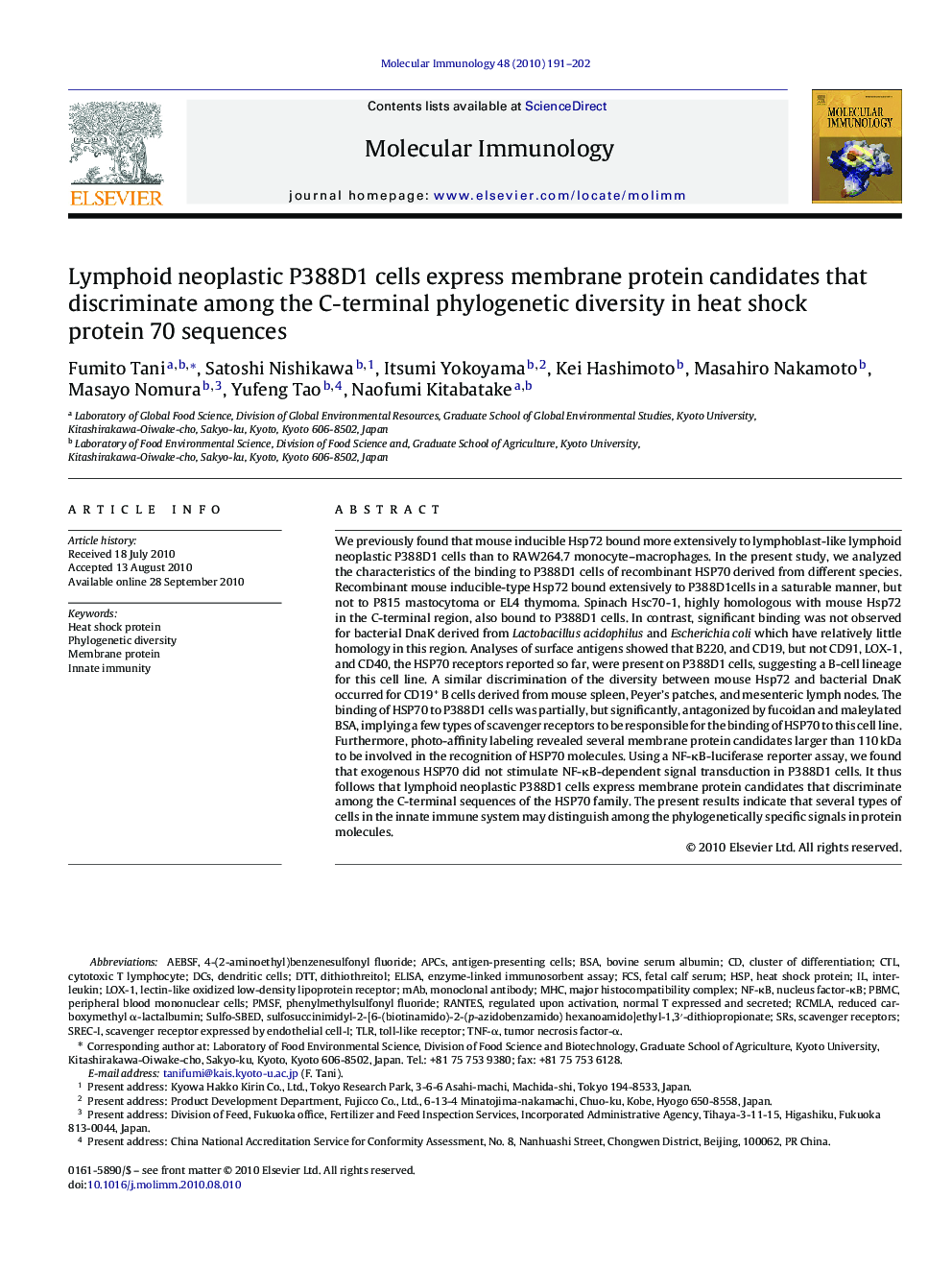| کد مقاله | کد نشریه | سال انتشار | مقاله انگلیسی | نسخه تمام متن |
|---|---|---|---|---|
| 2832009 | 1570739 | 2010 | 12 صفحه PDF | دانلود رایگان |

We previously found that mouse inducible Hsp72 bound more extensively to lymphoblast-like lymphoid neoplastic P388D1 cells than to RAW264.7 monocyte–macrophages. In the present study, we analyzed the characteristics of the binding to P388D1 cells of recombinant HSP70 derived from different species. Recombinant mouse inducible-type Hsp72 bound extensively to P388D1cells in a saturable manner, but not to P815 mastocytoma or EL4 thymoma. Spinach Hsc70-1, highly homologous with mouse Hsp72 in the C-terminal region, also bound to P388D1 cells. In contrast, significant binding was not observed for bacterial DnaK derived from Lactobacillus acidophilus and Escherichia coli which have relatively little homology in this region. Analyses of surface antigens showed that B220, and CD19, but not CD91, LOX-1, and CD40, the HSP70 receptors reported so far, were present on P388D1 cells, suggesting a B-cell lineage for this cell line. A similar discrimination of the diversity between mouse Hsp72 and bacterial DnaK occurred for CD19+ B cells derived from mouse spleen, Peyer's patches, and mesenteric lymph nodes. The binding of HSP70 to P388D1 cells was partially, but significantly, antagonized by fucoidan and maleylated BSA, implying a few types of scavenger receptors to be responsible for the binding of HSP70 to this cell line. Furthermore, photo-affinity labeling revealed several membrane protein candidates larger than 110 kDa to be involved in the recognition of HSP70 molecules. Using a NF-κB-luciferase reporter assay, we found that exogenous HSP70 did not stimulate NF-κB-dependent signal transduction in P388D1 cells. It thus follows that lymphoid neoplastic P388D1 cells express membrane protein candidates that discriminate among the C-terminal sequences of the HSP70 family. The present results indicate that several types of cells in the innate immune system may distinguish among the phylogenetically specific signals in protein molecules.
Journal: Molecular Immunology - Volume 48, Issues 1–3, November–December 2010, Pages 191–202